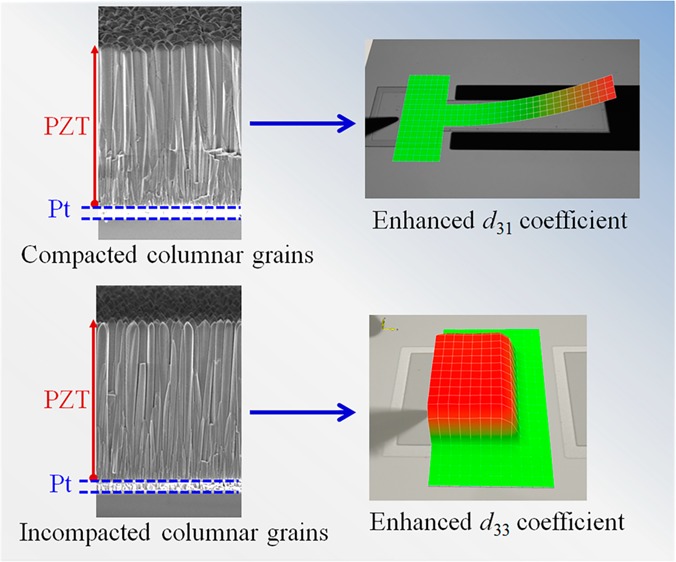- Record: found
- Abstract: found
- Article: not found
Strongly Enhanced Piezoelectric Response in Lead Zirconate Titanate Films with Vertically Aligned Columnar Grains

Read this article at
Abstract

Pb(Zr 0.52Ti 0.48)O 3 (PZT) films with (001) orientation were deposited on Pt(111)/Ti/SiO 2/Si(100) substrates using pulsed laser deposition. Variation of the laser pulse rate during the deposition of the PZT films was found to play a key role in the control of the microstructure and to change strongly the piezoelectric response of the thin film. The film deposited at low pulse rate has a denser columnar microstructure, which improves the transverse piezoelectric coefficient ( d 31f) and ferroelectric remanent polarization ( P r), whereas the less densely packed columnar grains in the film deposited at high pulse rates give rise to a significantly higher longitudinal piezoelectric coefficient ( d 33f) value. The effect of film thickness on the ferroelectric and piezoelectric properties of the PZT films was also investigated. With increasing film thickness, the grain column diameter gradually increases, and also the average P r and d 33f values become larger. The largest piezoelectric coefficient of d 33f = 408 pm V –1 was found for a 4-μm film thickness. From a series of films in the thickness range 0.5–5 μm, the z-position dependence of the piezoelectric coefficient could be deduced. A local maximum value of 600 pm V –1 was deduced in the 3.5–4.5 μm section of the thickest films. The dependence of the film properties on film thickness is attributed to the decreasing effect of the clamping constraint imposed by the substrate and the increasing spatial separation between the grains with increasing film thickness.
Related collections
Most cited references64
- Record: found
- Abstract: not found
- Article: not found
Contributions to the Piezoelectric Effect in Ferroelectric Single Crystals and Ceramics
- Record: found
- Abstract: found
- Article: found
A tetragonal-to-monoclinic phase transition in a ferroelectric perovskite: the structure of PbZr(0.52)Ti(0.48)O3
- Record: found
- Abstract: not found
- Article: not found
